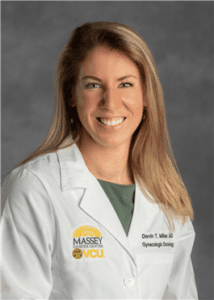SGO Wellness: The Surgeon as an Athlete: Thoughts on Performance and Longevity | Devin Miller, MD

Devin Miller, MD
It started off as a dull pain in my lower back after long OR days or running more than a few miles at a time. I was training for a race in my first year of clinical fellowship. Exercise, and in particular, racing, gave me a much-needed sense of accomplishment during this time of my life. I finished the Brooklyn half marathon with a new asterisk next to every activity in my life–chronic low back pain. Suddenly sitting for long periods of time, running and operating were coupled with pain. After a fair amount of internal resistance, I descended into the world of physical therapy, targeted training, chronic NSAIDs, and consults–when I could actually get to an appointment. I began to consider more than just the day-to-day function of my body as a trainee and considered what this meant in my career as a surgeon. I imagine many of us share a common story. Whether it is back or joint pain, a feeling of lack of endurance or mental fatigue in the OR.
Ergodynamics for surgeons is a relatively new concept but is gaining ground. Literature addresses the presence of work-related musculoskeletal disorders (WMSDs) in surgeons–with rates up to 94% reported in some studies6,7. Some evidence has focused on the difference in physical strain between different surgical modalities- robotics vs traditional laparoscopy and laparoscopy vs open surgery. While small studies, most show highest strain in open vs laparoscopic procedures8. Additionally, robotic surgery typically produces less workload and musculoskeletal strain than traditional laparoscopy9,10. The Society of Surgical Ergonomics, a relatively new organization with physician champions at many institutions, has focused on these issues and offers a toolkit for implementation of ergodynamic interventions in the OR. Several studies have examined risk factors in the OR for WMSDs, but solutions have not been identified7. Of note, no studies have been conducted in our field nor in those without a “typical” body, including prior injuries and pregnancy.
The act of performing surgery, similar to other physically demanding professions, is partly a practice of transcending physical needs, often for extended periods of time. As trainees, the historic model is to admire those of us able to push through long surgeries, ignoring discomfort and our physical needs. This notion may serve the needs of patients and the hospital in the short term, but if it comes with ignoring our own physical and mental well-being it does not ultimately serve the patient or surgeon.
Athletes train their bodies and minds for maximal performance and also to avoid injury. Recent trends in professional sports have focused on recovery, rehabilitation, training efficiency and mental health to significantly improve performance1. The concept of the surgeon as an elite athlete rather than a human purely capable of pushing through physical constraints has begun to emerge in professional societies and literature. This stems from two aspects of the field: the mental and physical cultivation towards peak performance and the ergodynamics (ie, injury prevention in athletes). Lectures and editorials have emerged comparing the two disciplines and the essential need for talent, cultivation, coaching, focus and the incredibly high stakes athletes and surgeons face2. Despite the push for wellness in GME, evidence indicates trainees and surgeons do not routinely participate in health-promoting behaviors despite their association with better performance3. Surgical coaching has emerged commercially but is not regularly recommended or incorporated into training. Some new interventions have focused on “micro-breaks” and targeting stretching in the OR, but very little on performance feedback and “outside of work” regimens to improve performance4,5.
I would argue the gynecologic oncologist is a surgeon/athlete; we take on the mental and physical strain of complex medical, treatment, and surgical decisions much like endurance and short-distance athletes. In order to attend to burnout in medicine and address the root cause, we must focus on the long-term impact of the physical demands of our profession. Perhaps if we model our surgical practice in a manner similar to athletes, we could significantly increase our career longevity–as well as our ability to fully participate in life outside of work.